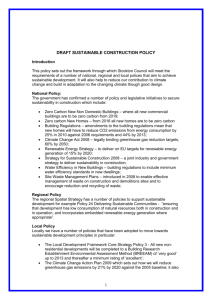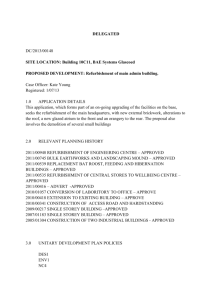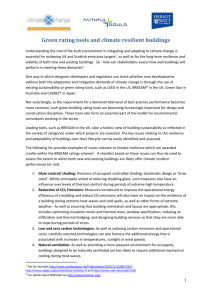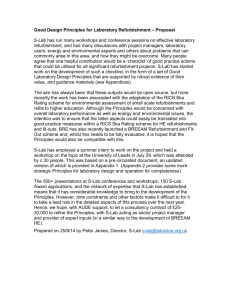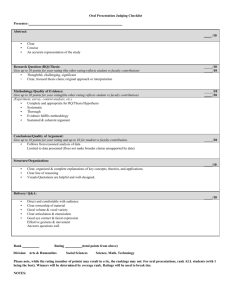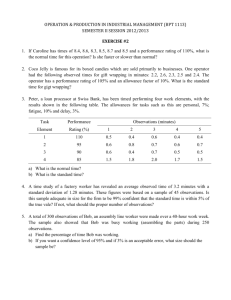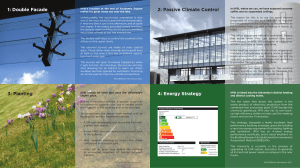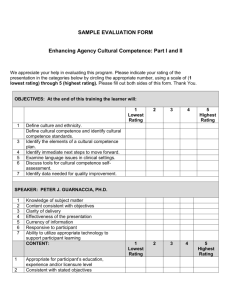Development and Construction Policy for Environmental
advertisement
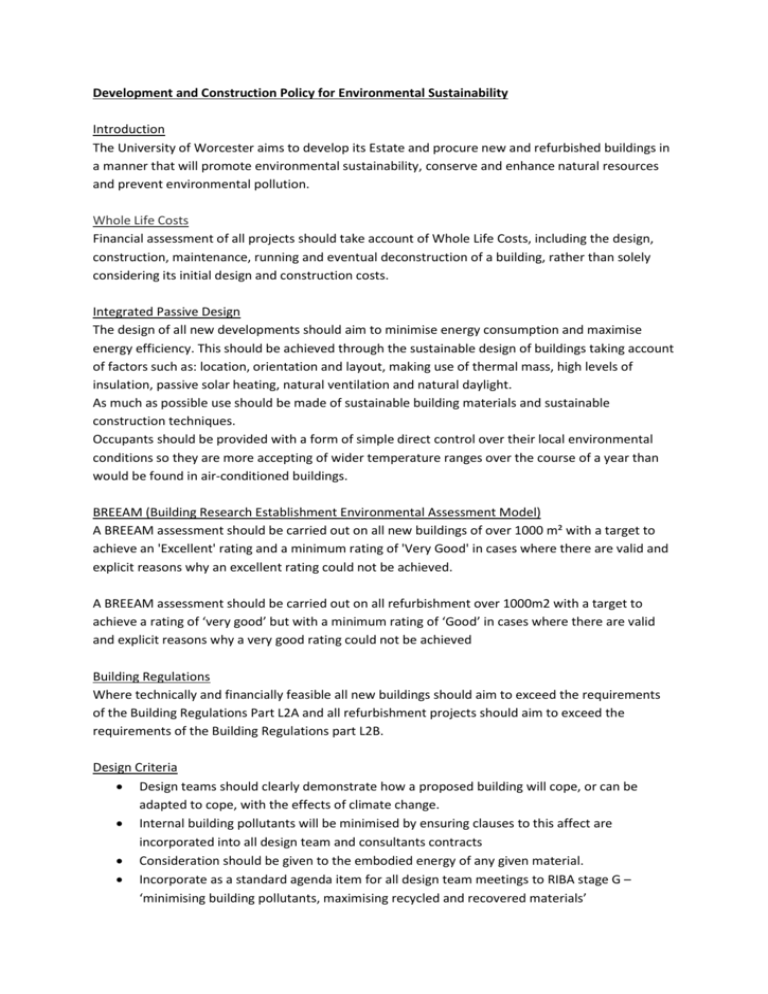
Development and Construction Policy for Environmental Sustainability Introduction The University of Worcester aims to develop its Estate and procure new and refurbished buildings in a manner that will promote environmental sustainability, conserve and enhance natural resources and prevent environmental pollution. Whole Life Costs Financial assessment of all projects should take account of Whole Life Costs, including the design, construction, maintenance, running and eventual deconstruction of a building, rather than solely considering its initial design and construction costs. Integrated Passive Design The design of all new developments should aim to minimise energy consumption and maximise energy efficiency. This should be achieved through the sustainable design of buildings taking account of factors such as: location, orientation and layout, making use of thermal mass, high levels of insulation, passive solar heating, natural ventilation and natural daylight. As much as possible use should be made of sustainable building materials and sustainable construction techniques. Occupants should be provided with a form of simple direct control over their local environmental conditions so they are more accepting of wider temperature ranges over the course of a year than would be found in air-conditioned buildings. BREEAM (Building Research Establishment Environmental Assessment Model) A BREEAM assessment should be carried out on all new buildings of over 1000 m² with a target to achieve an 'Excellent' rating and a minimum rating of 'Very Good' in cases where there are valid and explicit reasons why an excellent rating could not be achieved. A BREEAM assessment should be carried out on all refurbishment over 1000m2 with a target to achieve a rating of ‘very good’ but with a minimum rating of ‘Good’ in cases where there are valid and explicit reasons why a very good rating could not be achieved Building Regulations Where technically and financially feasible all new buildings should aim to exceed the requirements of the Building Regulations Part L2A and all refurbishment projects should aim to exceed the requirements of the Building Regulations part L2B. Design Criteria Design teams should clearly demonstrate how a proposed building will cope, or can be adapted to cope, with the effects of climate change. Internal building pollutants will be minimised by ensuring clauses to this affect are incorporated into all design team and consultants contracts Consideration should be given to the embodied energy of any given material. Incorporate as a standard agenda item for all design team meetings to RIBA stage G – ‘minimising building pollutants, maximising recycled and recovered materials’ Reclaimed material should be used wherever possible. Major building elements (i.e. upper floor slab, external walls, roof and windows) should achieve an overall 'A' rating as detailed in the Green Guide to Specification 'A' (BRE 1998). Timber, including structural timber, cladding, carcassing, internal joinery and panel products should usually be FSC (Forestry Stewardship Council) certified. Insulants should not contain, or require during manufacture, ozone-depleting substances. Paints and other wall coverings should be low or free of volatile organic compounds (VOCs). Substances containing CFCs (chlorofluorocarbons) and HCFCs (hydro fluorocarbons) should be avoided. External drainage systems should take account of SUDS (Sustainable Urban Drainage Systems) requirements to help manage run-off that might otherwise cause flooding. Biodiversity Developments of greater than 1,000 m² floor space will require the completion of a biodiversity checklist and an Environmental Impact Assessment. This must give details of how the development will seek to protect existing habitats and species, and give details of mitigation, enhancement or compensation strategies. Waste Management Adequate facilities should be provided for the storage and collection of segregated recyclable wastes (e.g. paper, cardboard, glass and aluminium cans). Construction Waste Management Ensure the ‘Halving Waste to Landfill’ clauses are included in all building and refurbishment contracts for consultants and contractors Set benchmark targets for ½ waste to landfill for all new build, refurbishment and demolition projects. Renewable Energy Increase proportion of site generated renewable energy to 15% for all new build projects over 1000m2 and for refurbishment projects over 1,000m2 where feasible. Pollution Prevention Minimise internal building pollutants by ensuring clauses to this affect are incorporated into all design team and consultants contracts Contractors Travel Plans Include in all ITTs a requirement for a travel plan to be submitted as part of the tender return. Include in all ITTs a requirement for submission of carbon emissions assessment for the project resulting from travel and transport (business and commuting) carried out as part of the contract. Approved December 2011

